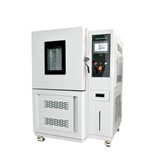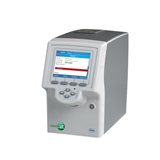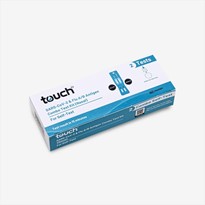Alternatively, it's not a problem with the increased reliability of rapid antigen tests providing quick and accurate results, and even with recent technologies, it can detect both FLU and COVID-19 with a single test making self-testing a favourable choice.
When it comes to our health, we care to use things with the highest quality available to be on the safe. With many tests out there, how can we choose the most accurate test? Some specifications separate a good rapid antigen test from another. But most of these features are expressed in medical terms that are often too complicated to be understood
If you had one of them at your disposal you might have encountered the word Sensitivity which measures how often a test correctly gives a positive result when a person has the disease, it would make it easier to imagine rapid antigen tests as a Thermometer then, sensitivity would be how accurate the thermal sensor when it comes to the detection of temperature varieties.
But how can one identify the best sensitivity?
Based on their sensitivity, rapid antigen tests are divided into acceptable, which refers to tests with a clinical sensitivity greater than 80%, High, which refers to tests with a clinical sensitivity greater than 90%, and very high, which refers to sensitivity greater than 95%.
Is sensitivity the only factor that matters when it comes to rapid antigen test performance?
Sensitivity makes up half of the equation, a test must be able to detect the presence of the disease accurately but must have the ability to confirm the presence of health as well and here comes the importance of specificity, which relates to how well a test can confirm the absence of a disease. Moving back to our thermometer, specificity would be how accurate would be the thermal sensor to detect healthy temperatures. It would be the quality of the test that delivers the good news and assure that you are healthy
What is the least acceptable specificity?
According to the latest studies, the specificity of rapid antigen tests should be at least 98%
Why specificity is so important that it should be as high as 98% for a test to be acceptable?
219 virus species are known to be able to infect humans. The specificity of the test demonstrates that the test is capable of detecting all viral strains causing the disease and will not produce a false positive result due to cross-reactivity with other viruses or interference by an unrelated pathogen or substance
Having said that, there is a hidden feature that no one is talking about quite frankly it’s a game changer when it comes to comparison between rapid antigen tests, the best tests are capable of detecting as little amount of viruses as possible and here it comes the importance of the limits of detections a feature that many manufacturers avoid talking about which is known as the smallest amount of viral antigen that can be reliably detected by the test. The thermometer's limits of detection would be its ability to detect minute changes in temperature.
The limits of detection thrive when there is a small number of viruses in the collected sample, tests with the highest limits of detection value would be unable to confirm the presence of the disease and in turn, would affect the dramatically the above-mentioned qualities “specificity and sensitivity”
What is the range of acceptable limits of detection?
The least acceptable range of Limits of detection varies among different viruses. In the laboratories, limits of detection are measured by different methods, the most common of which is the TCID50 which is known as the dilution of a virus required to infect 50% of a given cell culture. For example, the acceptable range of limits of detection for COVID-19 would be between 100 to 1000 TCID50/ml, to clarify a test that has 100 TCID50/ml has better limits of detection than one with 1000 TCID50.
In the end, many factors should be considered when buying a rapid antigen test, each factor would add a great deal to the test's performance and reliability, it’s the combination and collaboration of these features that make the difference, with the vast amount of rapid antigen tests presents on the market at comparable prices. One must make sure to have a test that is able to detect the presence or absence of the disease in the smallest number of viral samples possible with accuracy and reliability.
















-160x160-state_article-rel-cat.png)
















-205x205.jpg)